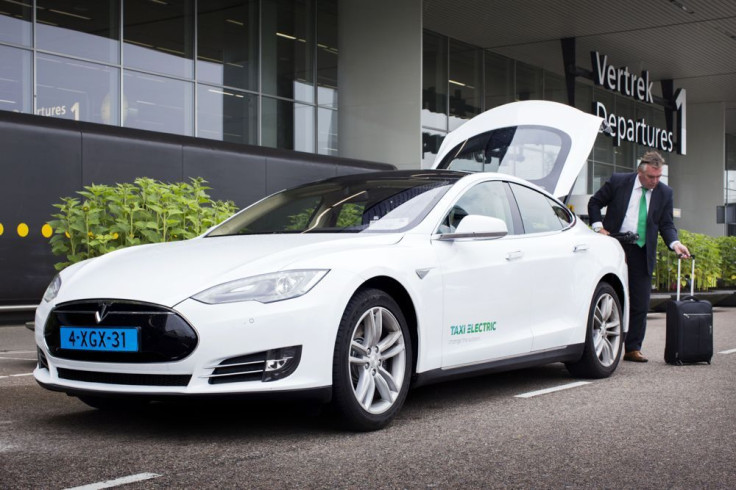Tesla Taxis: China Adds To Growing List Of Countries Hailing Model S For Cab Service

Nick Seitz was helping Tesla Motors launch sales operations in Ohio and Kentucky when he realized the potential the company's luxury electric cars have in commercial transportation. So last year, he bought a Tesla Model S and launched Drivr, a Cincinnati-based limousine-hailing service. The fleet has since grown to four cars, with more on the way. And Seitz is now planning his next outpost in Denver.
Seitz’s “exclusively Tesla” company offers rides at a price comparable to Uber’s recently introduced UberSelect luxury car service because, he says, using electric cars is more cost-effective.
“The economics help us keep the price low,” Seitz said. “There’s almost no fuel and maintenance costs that are associated with regular cars.”
Seitz is one of a growing number of entrepreneurs betting that Tesla’s high-tech, WiFi-enabled electric car is an obvious choice for commercial limousine transport.
A 20-hour flight away from Ohio, in Wuhan, China, the Wuhan Tri-Ring taxi company just reportedly placed an order for a fleet of 100 Model S sedans to use as a premium taxi service in the city of 10 million people. The company already had 10 Tesla taxis that give rides for a higher fee than conventional gas-burners, according to the China’s Sina Online. The rest of the cars are expected to be deployed by September.
The Chinese purchase is Tesla’s second-largest known fleet order after the Dutch government-owned Schiphol Group bought 167 Model S sedans to carry passengers to and from Amsterdam’s Schiphol Airport. That fleet, managed by two taxi companies, went live in October. Tesla doesn’t actively pursue bulk orders (known in the industry as fleet sales) because it wouldn’t be able to handle them without extending delivery delays to current U.S. customers.
Norway was the first country outside of the U.S. to use Tesla cars as taxis in 2014. Thanks to the country’s generous electric car incentives and high luxury car taxes, the Model S costs less than comparable gasoline-burning cars, like the Porsche Panamera, and taxi passengers in Oslo are more likely than anywhere else to wind up in the back of a Model S.
The cars are suited for urban commercial transportation because their range is higher than many average daily routes for conventional taxis. The New York City Taxi & Limousine Commission estimates that a typical yellow cab adds 70,000 miles to its odometer every year, or about 192 miles a day.
The Tesla Model S with the 85 kWh battery can travel 270 miles per charge, comfortably inside the distance a New York City taxi would travel on a typical day. And unlike urban apartment dwellers who can’t easily plug in privately owned electric cars, fleet owners can juice up their electric rides at a central location where the cars are parked when they’re not in use. One concern is traffic, especially in crowded cities. A Tesla Model S limo in a big city would give up a chunk of its range waiting to move forward.
Tesla Motors doesn’t itemized sales figures, so it’s difficult to know how many Model S cars are being used commercially. But interest is growing in offering the cars as limos, as California’s Strack Transportation started doing in 2013. And last month, Oregon’s Portland City Council approved an application for an electric-car taxi company. According to Oregon Public Broadcasting, EcoCab will start service in the city with 15 electric cars. Company owner Ron Knori says most of them will be Model S sedans.
Drivr’s founder Seitz says so far his customers have not been just business travelers -- the kind of customers China’s Wuhan Tri-Ring targets.
“The demographics are all over the place, from 25 [years old] to 65,” he said. “You also have elderly people who want to get around. The cars have room for their wheelchairs.”
© Copyright IBTimes 2024. All rights reserved.












